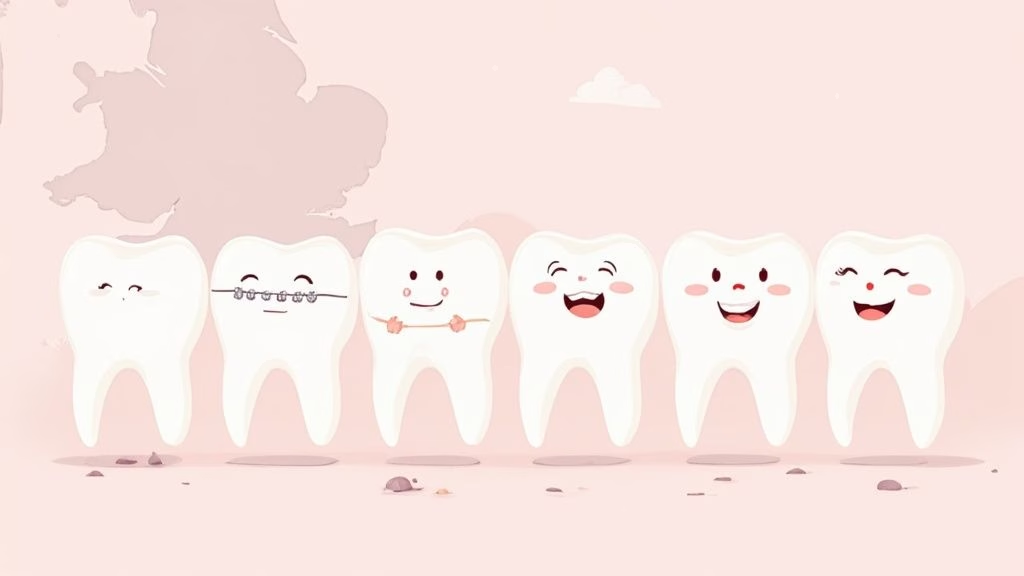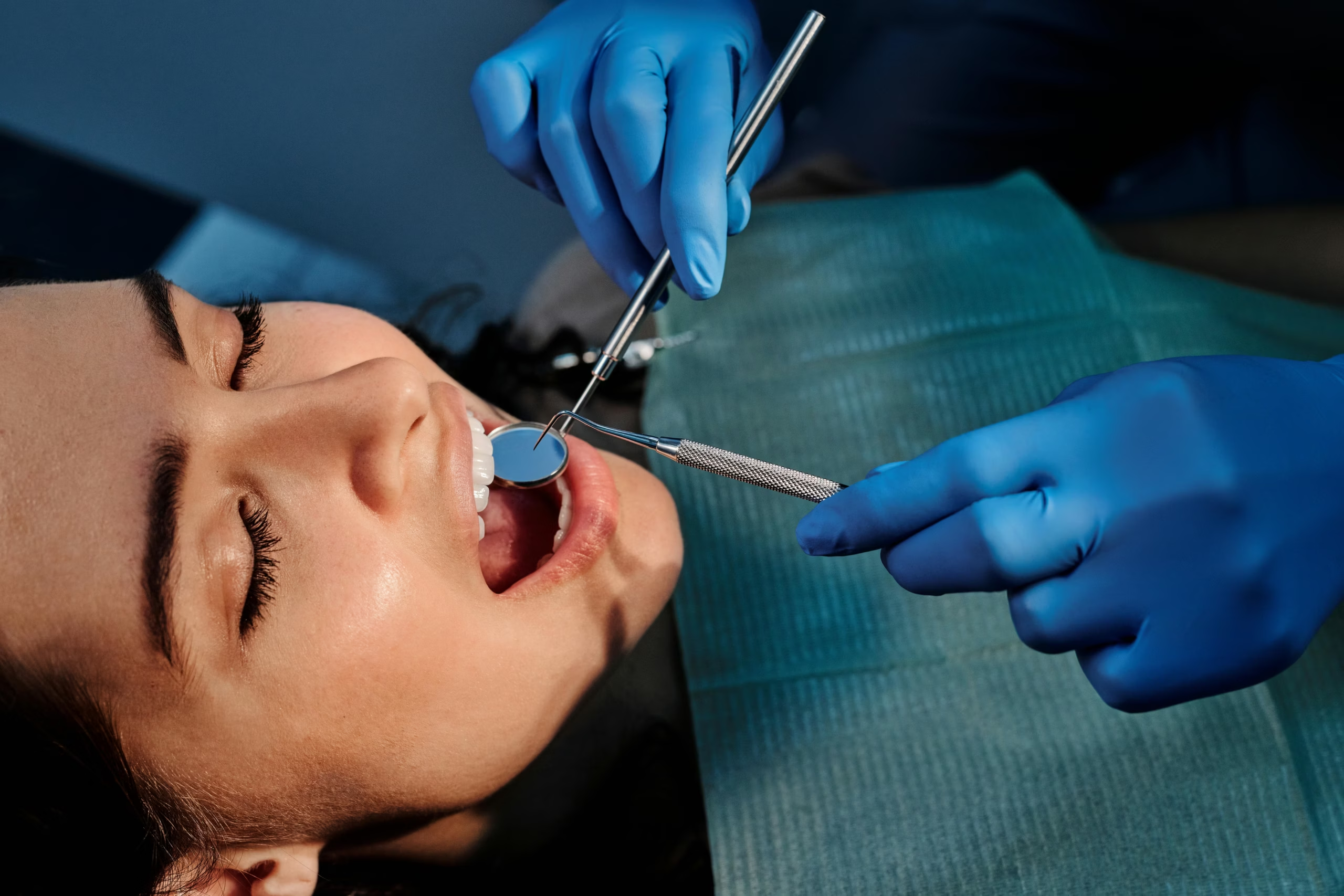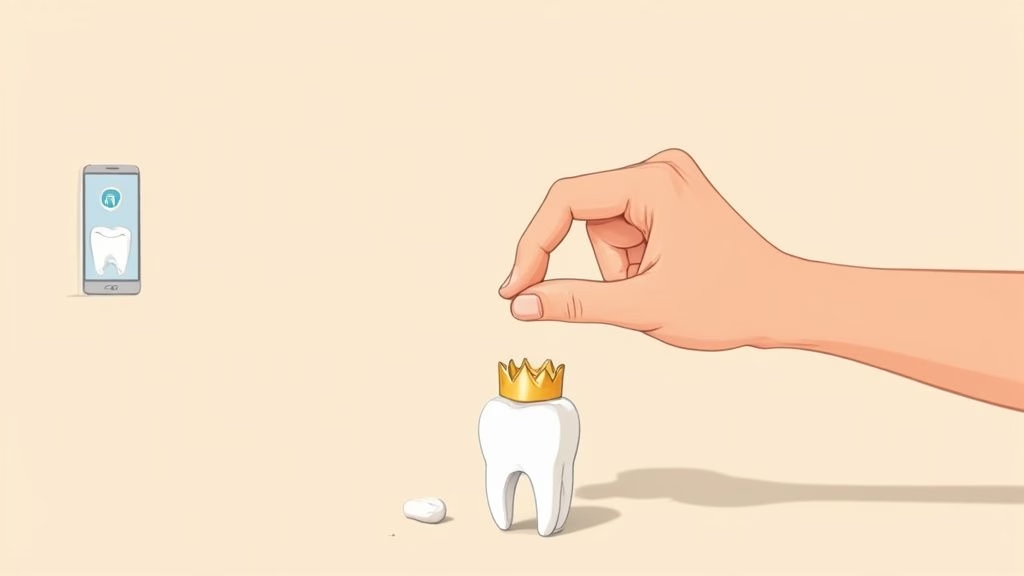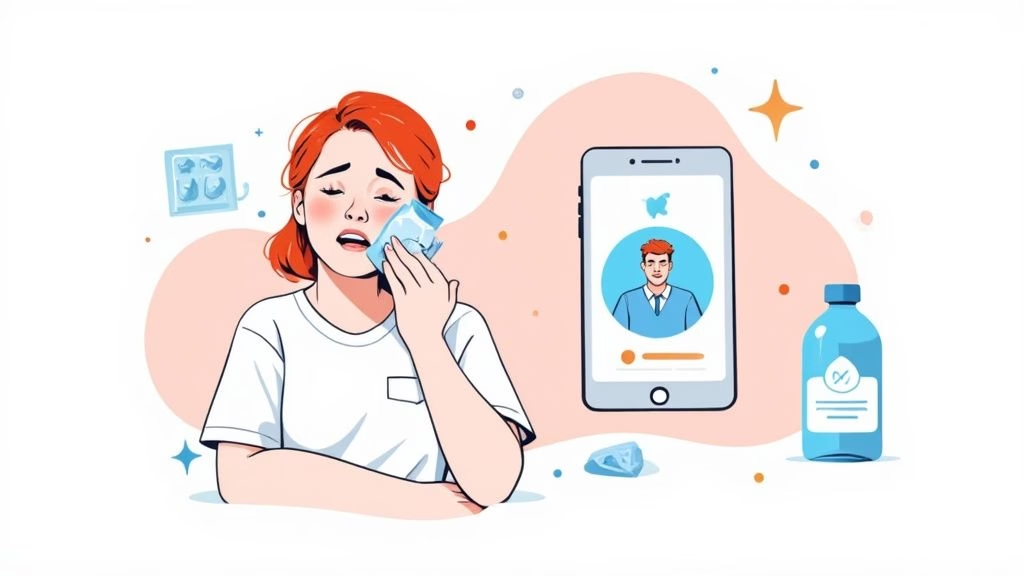How to Stop Toothache Immediately: Expert Remedies That Actually Work

Understanding What’s Behind Your Toothache

When tooth pain strikes, it can disrupt your entire day – from eating meals to getting restful sleep. Getting to the root cause of your toothache is essential for finding relief and protecting your long-term oral health. Understanding the specific type of pain you’re experiencing can provide important clues about what’s wrong.
Common Culprits Behind Tooth Pain
Several factors can lead to tooth pain. Tooth decay occurs when bacteria eat away at tooth enamel, creating cavities that can irritate nerve endings. Gum disease causes painful inflammation in the gums and surrounding tissues. A cracked or fractured tooth exposes sensitive inner layers, often causing sharp pain during biting.
The type of pain often hints at the underlying issue. Sharp, shooting sensations may point to a crack or exposed nerve, while throbbing pain could mean infection or abscess. Temperature sensitivity when eating hot or cold foods frequently indicates weakened enamel or receding gums, causing brief but intense discomfort.
Recognizing the Severity of Your Toothache
Not every toothache requires immediate professional care, but knowing when to seek help is crucial. Some cases respond well to home remedies, while others demand prompt dental attention. Persistent pain with fever, swelling, or trouble swallowing needs urgent evaluation to prevent serious complications.
Chronic pain that disrupts sleep or daily activities warrants a dental visit. The impact of dental pain is significant – 28% of UK workers have missed work due to tooth pain, resulting in 23 million lost workdays annually according to Dentistry.co.uk. Mild, occasional pain that improves with over-the-counter medication may be manageable at home initially.
Communicating Effectively With Your Dentist
Clear communication about your toothache helps your dentist make an accurate diagnosis. Note details about the pain location, type, timing, and any other symptoms you experience. This information guides your dentist toward the right treatment approach, potentially saving time and discomfort through targeted care. Take time to track these specifics before your appointment to help your dentist help you.
Immediate Home Remedies for Tooth Pain Relief

A toothache can make even simple daily tasks feel impossible. When dental pain strikes, knowing effective home remedies can provide quick relief until you can see a dentist. Here are proven methods to help manage tooth pain safely at home.
Saltwater and Hydrogen Peroxide Rinses
A simple saltwater rinse works as a natural disinfectant to clean the affected area. The salt helps kill bacteria and reduce swelling. For added benefits, try a hydrogen peroxide rinse. This acts as an antiseptic to fight bacteria and soothe inflamed gums.
The Natural Power of Clove Oil
Clove oil contains eugenol, a natural compound that numbs nerve endings and fights bacteria. To use, lightly dab the oil on the painful area with a cotton ball. Be careful not to use too much, as this can irritate your gums and mouth tissues.
Cold Compresses and Pain Medications
Apply a cold compress to your cheek over the sore area. The cold helps shrink blood vessels, reducing swelling and numbing pain. Taking over-the-counter pain relievers like ibuprofen can further help by targeting inflammation. Always follow dosage instructions carefully.
Getting the Most Relief
For best results, try combining different remedies. Use a saltwater rinse first, apply clove oil, then use a cold compress. Space out treatments to avoid irritating your mouth. Ask your dentist about the best way to combine treatments safely.
Simple Solutions from Your Kitchen
Common foods like garlic and raw onions naturally fight bacteria that can cause tooth pain. However, be wary of folk remedies like using alcohol to numb pain – these can actually damage sensitive teeth and gums.
While these home treatments can provide temporary relief, they don’t fix the underlying problem causing your toothache. Use them to manage pain until you can see a dental professional. For quick access to dentist advice, the Toothfairy app offers virtual consultations with qualified dentists 24/7.
When to Seek Emergency Dental Care

Sometimes a toothache needs more than just home remedies. Understanding when you need professional help can make the difference between saving and losing a tooth. Here’s what you need to know about identifying dental emergencies.
Recognizing Dental Emergencies
Watch for these warning signs that require immediate dental care:
- Strong, persistent pain: Pain that doesn’t respond to standard pain relievers needs professional evaluation
- Swelling in face: Swollen areas around jaw, cheek or eye may indicate infection
- Fever: Combined with tooth pain often means infection requiring antibiotics
- Trouble breathing/swallowing: This can signal dangerous infection needing immediate care
- Ongoing bleeding: Continuous bleeding after injury or procedure requires urgent attention
- Damaged tooth: Quick action on loose or knocked-out teeth increases saving chances
- Mouth/jaw injuries: Accidents causing fractures or tissue damage need emergency care
Getting help quickly for these issues helps prevent more serious problems. Waiting too long often leads to tooth loss and higher treatment costs.
Taking Action While Waiting for Emergency Care
Before you can see a dentist, try these steps to manage the situation:
- Use basic remedies: Salt water rinses and cold compresses help reduce pain
- Track symptoms: Note pain location, intensity and timing to help your dentist diagnose
- Take allowed pain medicine: Follow dosage instructions for ibuprofen or acetaminophen
- Call your regular dentist: Keep them informed even if going to emergency care
These measures help control discomfort and provide helpful details for dental professionals.
Getting Care Despite Cost Concerns
Money worries keep many from seeking dental help. In fact, 41% of UK adults avoid dental visits due to cost, and 16% can’t afford NHS dental care. Find more detailed statistics here. However, options exist – many dentists offer payment plans, and some urgent care centers provide basic dental services. Hospitals may also have dental emergency departments. Don’t let financial concerns stop you from getting needed care. Your oral health connects directly to your overall wellbeing.
Natural and Alternative Pain Relief Methods

While medication and emergency care are vital in managing severe toothaches, natural and alternative methods can provide additional relief and promote better oral health. These approaches work particularly well for mild to moderate pain or as part of a complete pain management strategy.
Using Acupressure for Tooth Pain
Acupressure draws from Traditional Chinese Medicine principles by applying pressure to specific body points to ease pain. For tooth discomfort, certain spots on the face and hands connect to pathways affecting oral wellness. The LI4 point between your thumb and index finger often helps reduce facial pain. While not a substitute for dental treatment, this technique may offer temporary relief by activating the body’s pain-blocking mechanisms.
Effective Herbal Solutions
Several herbs have proven pain-relieving and anti-inflammatory benefits. Clove oil contains eugenol, which acts as a natural numbing agent and germ-fighter. Peppermint tea can calm sore gums thanks to its menthol content. Be sure to check with your healthcare provider before using herbal remedies, especially if you take other medications or have health conditions. This helps ensure safe use of natural pain relief options.
Supporting Long-Term Oral Health
Good oral health habits help prevent future toothaches. A balanced diet with essential vitamins and minerals strengthens teeth and gums. Calcium and vitamin D play key roles in protecting tooth enamel. Simple stress management through meditation or deep breathing can reduce teeth grinding, which often leads to tooth pain and jaw tension. These preventive steps address common causes of oral health issues.
Safe Use of Natural Remedies
Many natural treatments work well together or alongside professional dental care for better pain relief and healing. For example, rinsing with warm salt water before applying diluted clove oil provides both cleaning and pain-numbing effects. Research possible interactions before combining remedies, especially with herbs or essential oils. This careful approach helps relieve pain safely. Remember that natural remedies should support, not replace, proper dental treatment. Always see a dentist for ongoing or severe pain.
Prevention: Stop Future Toothaches Before They Start
Keeping your teeth healthy requires ongoing attention and care. Regular dental care and smart habits can help you avoid the discomfort of toothaches. By understanding what causes tooth pain and taking the right preventive steps, you can maintain better oral health.
Building a Daily Oral Care Routine
The key to preventing toothaches starts with proper daily dental care. Effective brushing means using fluoride toothpaste and the right technique to clean all tooth surfaces for a full two minutes, twice each day.
Daily flossing removes food and plaque from between teeth where brushing can’t reach. This simple step helps prevent cavities and gum problems that often lead to pain. Adding an antimicrobial mouthwash provides extra protection against bacteria and keeps your breath fresh.
How Your Diet Affects Tooth Health
The foods and drinks you choose directly impact your teeth. Sugar feeds decay-causing bacteria, making cavities and pain more likely. Focus instead on eating plenty of fruits, vegetables, and calcium-rich foods to keep teeth strong.
Crunchy produce like apples and carrots can help clean teeth naturally as you chew. Dairy products provide calcium that strengthens tooth enamel. Making smart food choices supports long-term dental health and comfort.
Managing Stress to Protect Your Teeth
Many people don’t realize how stress affects oral health. Tension often leads to bruxism – unconsciously grinding or clenching teeth, especially during sleep. This puts damaging pressure on teeth that can cause sensitivity and jaw pain.
Finding healthy ways to reduce stress through relaxation, breathing exercises, or gentle movement can help limit grinding. For nighttime grinding, ask your dentist about getting a custom night guard. This protective barrier prevents direct tooth contact while you sleep.
New Tools for Better Dental Care
Modern dental care products make prevention easier and more effective. Electric toothbrushes with special cleaning heads remove more plaque than manual brushing alone. Water flossers offer an alternative way to clean between teeth, especially helpful for people with braces or dental work.
Take time to explore different tools and find what works best for your needs. The Toothfairy app even lets you consult with dentists virtually to create a personalized prevention plan. Investing in good oral care today helps you avoid tooth pain and costly treatments later.
Long-Term Solutions and Professional Treatment Options
Professional dental care is essential for addressing the underlying causes of tooth pain. Being informed about available treatments allows you to make better decisions about your dental health and understand what to expect from various procedures.
Common Dental Procedures for Toothaches
Dentists offer several treatment options based on your specific condition. Fillings fix cavities and stop decay from spreading further. When an infection reaches the inner tooth, root canals remove the infected tissue while preserving the natural tooth. Crowns protect and strengthen damaged teeth. In cases where a tooth cannot be saved, extraction may be needed, followed by replacement options like bridges, dentures, or dental implants.
Evaluating Treatment Recommendations
Your dentist should explain each proposed treatment, including its benefits, risks, and expected outcomes. For example, while root canals often have a negative reputation, they can save your natural tooth and prevent the need for extraction. Be sure to ask questions about the procedure details and any alternative options. This helps you understand the reasoning behind recommendations and choose what works best for you.
Understanding Costs and Recovery
Treatment costs vary based on the procedure complexity and your location. Many dental offices provide payment plans and accept insurance to help make care more affordable. Ask about expected recovery times too – a filling may need minimal downtime, while implants often require multiple appointments and longer healing periods.
Modern Treatment Options
Dental technology continues to improve, bringing new and effective solutions. Many procedures now use minimally invasive techniques that preserve more of your natural tooth structure. This might include laser treatments or protective sealants to prevent cavities. Talk with your dentist about whether these newer options suit your needs – they may save time and reduce discomfort.
Want expert advice about your dental concerns from home? The Toothfairy app connects you with qualified dentists for virtual consultations. Download it today at Toothfairy App to get personalized guidance for your dental health needs.
Last updated on February 17, 2025

Toothfairy Care Team
Toothfairy, is the world's smartest dental app, that connects patients to a dentist for a range of issues, from emergencies, cosmetics, prescriptions to virtual exams.
Toothfairy Care Team
Toothfairy, is the world's smartest dental app, that connects patients to a dentist for a range of issues, from emergencies, cosmetics, prescriptions to virtual exams.





